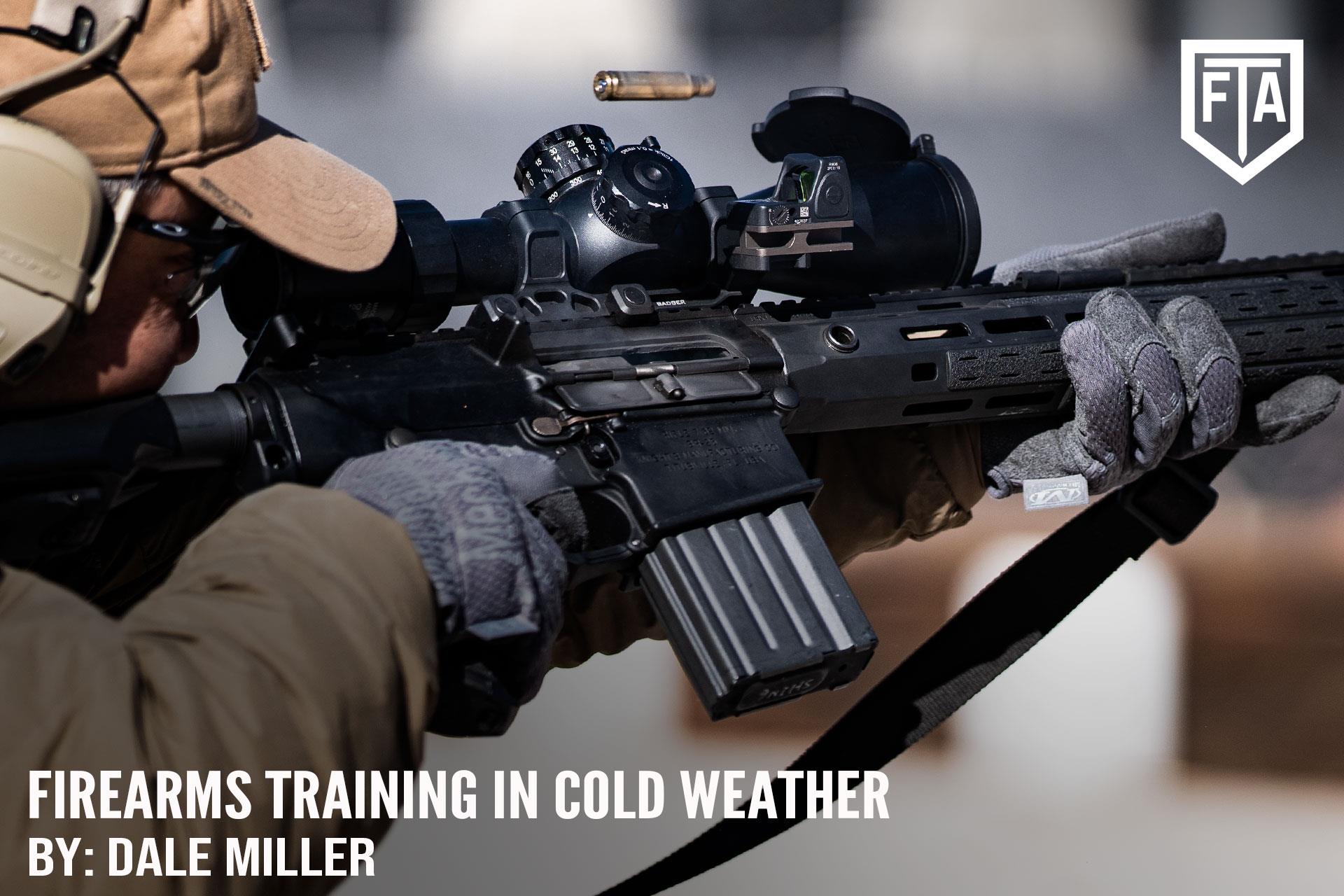
Posted on November 11, 2021 by Allen Dale Miller in Training
Firearms Training In Cold Weather
As many of you know, Tom Givens of Rangemaster posts a Drill of the Month in his monthly newsletter. The goal is to encourage focused and purposeful training by shooting the monthly drill cold and then reporting on your results including what you learned. The first Drill of the Month was presented in the January 2019 newsletter and I shot it cold as Tom said you should, a cool -26 degrees Fahrenheit. Yes, in Minnesota we train year-round even when indoor ranges are not available. Many Southerners may think firearms training in these near Arctic temperatures would be near impossible, but by following some basic considerations it can be both safe and productive.
Preparations for cold weather firearms training can be binned into two categories: facilities and personnel. Mitigating the footing challenges on your facility caused by snow and ice should be an early preparation step. Depending on the training activity, it can be an enormous undertaking or a minimal chore. I tend to limit winter training to simple, static position shooting which makes the range preparation much simpler and is safer when the shooter is experiencing less dexterity and faces movement challenges. Just shovel clear paths to the range and each shooting point. If you own the range, plows or snowblowers are a must in keeping your range open.
Once you have cleared the walking surfaces, you need to address the traction on the ice or packed snow. This can be as simple as spreading any of the various commercial ice melt products, rock salt, or sand. All of these can work, but the deciding factor is often the cost as spreading these materials over large ranges can be quite costly. Use of commercial ice cleats is another solution to slippery range surfaces, but having numerous pairs in various sizes can be a logistical challenge.
Another early consideration is verification that your backstop is safe. Many take it for granted that a backstop or berm that was safe in July is still safe in January. Cold weather can create a safety concern on the berm construction material depending upon your latitude. Typically, the topsoil in Minnesota freezes solid in winter which prevents projectiles from being retained by the berm. Berms with a top layer of porous soil or sand may not freeze solid. The best cold weather backstops are designed so that the low-in-the-horizon northern sun is still able to shine on the backstop which can minimize frozen berms. Using the recycled rubber material is probably the best option, but it can be expensive.
Yes, windchill is a thing. It is the affect wind has on skin in cooling it quicker and greatly impacting the effect of the cold. To guard against windchill, consider using temporary shelters if a permanent structure is not available. These don’t have to be on the shooting line, but just near enough to allow shooters an opportunity to warm up between relays. This is also a good place to have heating stations with radiant or space heaters. I use a 65,000 BTU DeWalt torpedo style heater which utilizes a 20 lb. propane tank and has a fan powered by a rechargeable battery. This makes it quite portable and useable on remote ranges that often don’t have AC power.
If your students are local, they should already know how to dress for winter, but it is wise to remind them when you send out the class information. They should also check the weather forecast for the upcoming class dates and wear (or bring) clothing that is appropriate for the predicted weather conditions. Dressing in layers allows the student the most options and is the recommended method for all winter dress. It allows the student to remove some outerwear during the shooting stages and bundling up when returning to the warming area. Students should work with all normal winter clothing on, but you must use additional caution when drawing and holstering. And don’t forget to remove those drawcord devices! Many have found out the hard way that these devices will find their way inside the trigger guard. After training in full winter clothing, carrying a J-frame revolver in a parka pocket becomes very appealing!
In really cold weather, some type of hand protection is necessary. The absolute warmest option are mittens, not gloves. However, mittens just don’t allow firearm operation. So, it will need to be gloves, but not all gloves are created equal. I have yet to see “tactical” gloves which will truly keep your hands warm in below zero temperatures. And if they provide enough insulation to keep your hands warm, they are probably unsafe for firearms manipulations. It is critical for the instructor to evaluate the student’s gloves for safety issues caused by excessive bulk. When in doubt, light gloves and frequent breaks at the warming station is the best option.
A final equipment consideration that all glasses wearers understand is the challenge created when your eyewear fogs up. Using some of the commercial anti-fogging agents can help (e.g., Cat Crap) but you should always be prepared to stop the course of fire if the shooter’s vision is obscured such that safety is impacted.
In conclusion, winter firearms training does present a few challenges, but it can be performed safely. So don’t let a little cold stop you.
 |
Dale Miller
After a stint in Law Enforcement with a Southern California beach city, Dale Miller relocated to Minnesota where he has spent the past 30+ years protecting nuclear assets from radiological sabotage. He has been a firearms instructor since the early 1990’s with NRA Law Enforcement certifications in handgun, shotgun, and patrol rifle. He is also a Rangemaster Master Instructor and Shotgun Instructor. He owns A-Zone Solutions, LLC where he primarily provides gateway instruction to new firearms owners. has been happily married for 41 years to Konda who is also a very proficient shooter. |